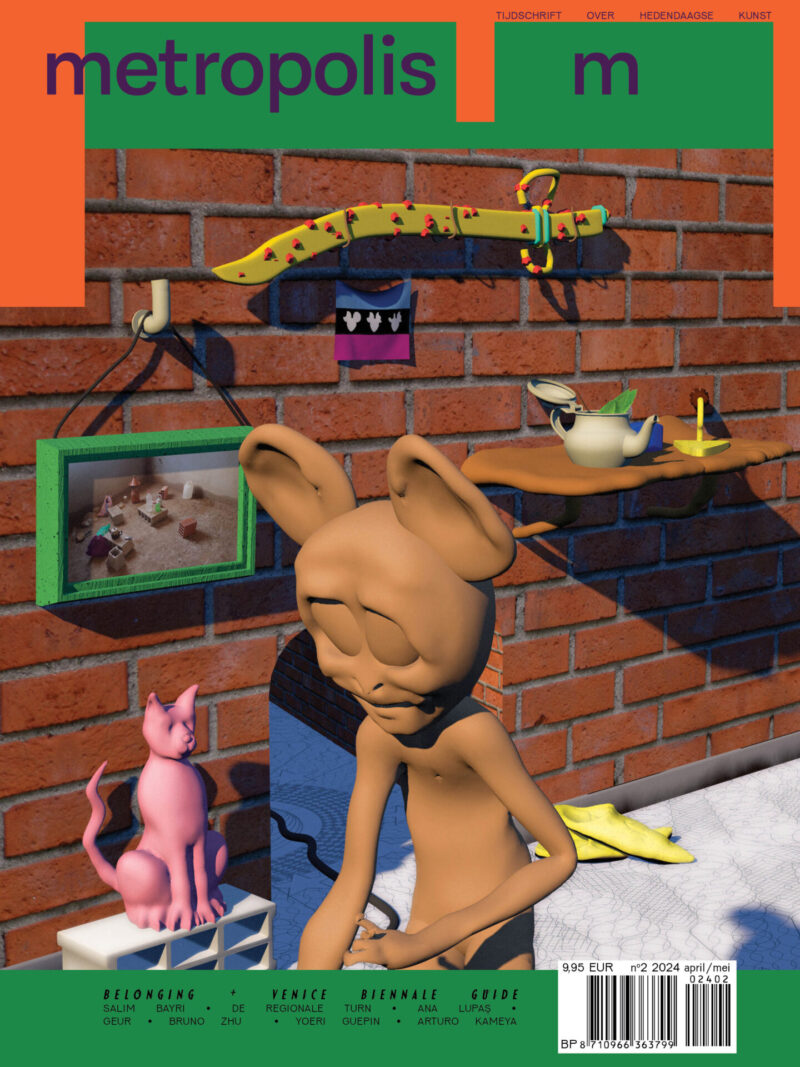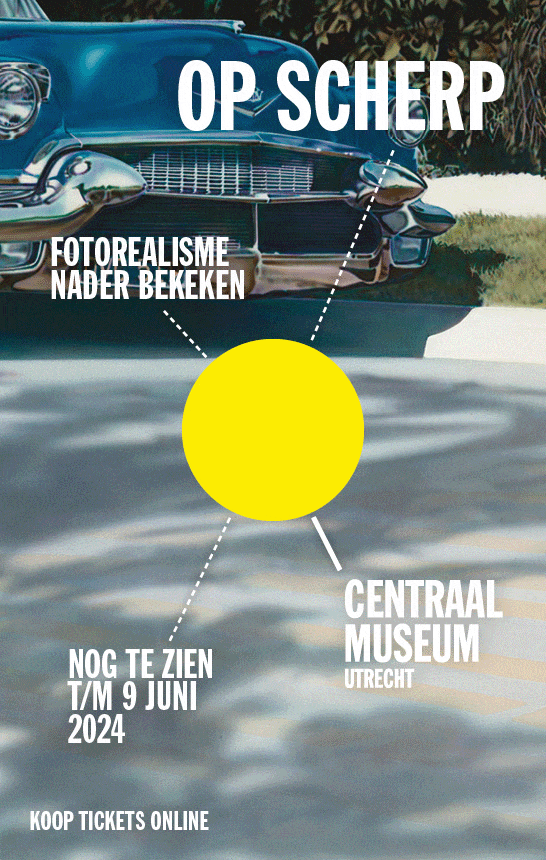
Into Nature, ‘Time Horizons’, 2023. Emii Alrai, ‘Drinkers of the Wind’. Photo: Heleen Haijtema
Not just a ‘nature’ exhibition: on this year’s immersive edition of Into Nature
Into Nature serves a different role than other biennials or ‘nature’ exhibitions. With its distribution across kilometers, this year’s edition ‘Time Horizons’ induces a willingness to slow down, take your time and encounter the works as an integral part of the landscape.
The Drenthe landscape is subtle to this North American’s eye, but abundant with geographical and historical significance. During my first encounter with the Into Nature biennial in 2021, in the middle of the pandemic, the landscape was a quiet surprise. I found some of the slightly untamed energy I had missed since moving to the Netherlands a few years ago.
That third edition, ‘New Energy’ materialized in the Bargerveen like a fresh breeze in a suffocating room of social and spatial containment. This fourth edition of Into Nature, ‘Time Horizons,’ soothes what feels like the frenetic beat of our post-pandemic trance festival. Activating both humor and awareness, it repositions us in relation to a much larger perspective that was there all along.
This time the biennial anchors in the village of Drouwen, and roams areas adjacent to nearby Borger and Exloo, the center of a glacial moraine known as the Hondsrug. This 70-kilometer long ridge, carved by retreating ice 170,000 years ago, is also host to a remarkable line of ancient burial sites, the Hunebed. Like other prehistoric megaliths, they are composed of large boulders arranged by the people who inhabited the area over 5000 years ago. Forty-seven of these sites form a loose chain along the Hondsrug from Groningen to Emmen. Besides a sign modestly off to the side, the sites are unadorned and unguarded, tucked into meadows, laying under trees between farms, or secluded in forests. As traces of geologic and human history, their presence channels the energy of unfathomable forces.
For my visit I stayed in Exloo and biked through its hauntingly quiet forest to reach the biennale route. It was a rainy week in August, with periods of sun each day. Balancing this and remembering how much time it took to walk the route in 2021, I planned to spend a few days this time.
Into Nature seems to emphasize the ‘into’ for all – the artists, their work and the visitor. Walking or biking between the sites are both options, but walking is preferable, simpler – some sites are only reachable on foot.

Into Nature, 'Time Horizons', 2023. Bank & Rau, 'Just Give me a Minute!'. Photo: Heleen Haijtema
Walking the distances between sites serves up the pleasures of the Drenthe landscape – gentle rolling fields, pine forests effulgent with damp soil, occasional charming houses. Massive cloud formations ride across a piercing blue sky that sometimes outshines everything else. A stiff breeze nudges me along, animating the fields and trees, occasionally countered by the deep stillness of a Hunebed site.
The installation by Bank & Rau brings to mind our ancestors’ domestic activity, from a time when the whole day would be consumed in doing laundry
Some of the artists seem to play with these elements. The installation by the artist team Bank & Rau, ‘Give me a minute’- whose substantial wood stick-figures do laundry and other household activities, occupies a field between two of the ancient sites – a kind of diorama bringing to mind our ancestors’ domestic activity, from a time when the whole day would be consumed in doing laundry.

Into Nature, 'Time Horizons', 2023. Stefan Cools & Sandra van den Beuken, 'Wandeling op geel' ('Walk on yellow'). Photo: Heleen Haijtema
Other rhythms play in Gavin Wade & Paul Conneally’s intervention. Behind the grassy hill of a 4000-year-old barrow, I find an arrangement of cut logs on the side of a path winding into the woods. The collection of birch, oak, pine and beech was arranged as if it was just random timberwork awaiting clean-up. Taking a standing log for a seat, I noticed they are carved with short poetic phrases. My seat also offered a book tucked perfectly into a slot carved in the side, where I could read all of the ‘77 verses’ of the work’s title. One might stop there, but footpaths disappearing into the trees always beckon. Several more clusters were laid along the path to pause and peruse. Reading offered only fragments of meaning, the rhythm dispersed by the cutting. I later read that an inspiration for the work is the influence of the warmer climate, which causes trees to fall victim to new insects tunneling under the bark, leaving behind traces like script etched in the wood beneath. At first, it all feels a bit too clever, but later, an impression returned of experiencing playful transmissions from a partly hidden world.
Stefan Cools and Sandra van den Beuken’s work ‘Wandeling op geel (Walk on Yellow) encouraged me to seek and document as many different examples of yellow flowers as I could find along the route

Partly hidden, because one of the aspects I found most rewarding in both the 2021 and current editions of Into Nature is how walking the route, rather than bicycling, you encounter the works as an integral part of the landscape; yet taking time to experience the work, you become more aware of the physical features of the landscape – and the messages that we could understand through it. The theme of this edition, ‘Time Horizons’ seems intended to reshape our perspectives gently, and perhaps in doing so, empower us to a different kind of agency in the world. Nearly all the works are site-specific, created in response to what the artists – who come from both within and outside the Netherlands – discover in visiting the place. A prime example is a work I encountered early on, by Stefan Cools and Sandra van den Beuken, ‘Wandeling op geel (Walk on Yellow).’ Provided with a card with swatches in various shades of yellow, I was encouraged to seek and document as many different examples of yellow flowers as I could find along the route. It’s a treasure-hunt with an agenda: in the accompanying essay ‘The Yellow Heath’ by ecologist Jap Smits, I read that the diversity of yellow wildflowers that return to this landscape is dwindling every year. Seeking became a citizen science project and a reminder of the rewards of quality attention – a deeper connection to place and wider awareness of subtler aspects in the environment. It primed my senses for all kinds of noticing as I wandered further along the route.
This immersive quality seems to go hand-in-hand with not only the structure of Into Nature but an intention to serve a different role than other biennials or ‘nature’ exhibitions. With its distribution across kilometers, ‘Time Horizons’ induces a willingness to slow down and take your time.

Into Nature, 'Time Horizons', 2023. Randy Lee Cutler, 'DeepTimeRadio LOFAR'. Photo: Heleen Haijtema
After walking for quite a while, passing through fields of onions and beets, I came upon an open area by the road, marked by wildflowers growing in several circular formations. This locally-nurtured border is adorned by Emii Alrai’s massive grey sculpture. As if excavated, it’s raised above the ground on two steel armatures, and encircled by etched wood tablets that impart a fantastical story of the land. Referring also to the horses that are connected to this place, the work, ‘Drinkers of the Wind,’ lead me to wandering the circles for a while and contemplating how history reveals itself in landforms and not only in what it buries.
Unlike sculpture parks where nature’s role is to be a neutral ‘green cube’ for work that refers to either conditions elsewhere or its own sensibility, integrating people with a sense of place here seems paramount

Into Nature, 'Time Horizons', 2023. Egill Sæbjörnsson, 'Hola Móra IX'. Photo: Heleen Haijtema
Another day, sitting in the midst of the LOFAR installation, I pondered its role in connecting with sound (perhaps sentient) deep in outer space with the assistance of Randy Lee Cutler’s immersive ‘DeepTimeRadio,’ while watching deer emerge from the grass in the protected marshland that surrounds the sensitive site. These works draw some attention to themselves with their well-crafted aesthetic qualities, but more often they draw attention to how the landscape’s social and ecological traces form a continuum in which we ourselves are elements. Unlike sculpture parks, or installations where nature’s role is to be a neutral ‘green cube’ for work that refers to either conditions elsewhere or its own sensibility, integrating people with a sense of place seems paramount. So it is that each work – different as they are from each other – also make existence itself more knowable.
More than connecting to past and present, references to deep time recur throughout the exhibition: the curatorial choice of place among the LOFAR installations and the geologic history of the Hondsrug. Or Egill Sæbjörnsson’s wryly funny animated film ‘From Magma to Mankind,’ suggesting our origins not in single-cell organisms but in the planet’s original volcanic magma. Or through the many references to rituals or transitions transcending the experience of productivity and accumulation. The mirror of deep time peeks out from many works, reflecting horizons broader and deeper than our short attention spans. The exhibition seems to rewire the perspective behind the malaise we all are feeling at this moment, when technology has leapt forward unabated, challenging our purpose as a species in a culture where we’ve long prioritized what we do instead of how we are. Where we’ve experienced time severely warped by the isolation of the pandemic, while we struggle with our unrecognizable climate. Is it any wonder we are looking for ways to expand our horizons? There is a latent optimism in ‘Time Horizons’ – if we accept the invitation to fully experience the details of our surroundings – perhaps the movements buried in the landscape – we might finally experience stillness.
Into Nature can be experienced until the 29th of October, 2023
Susan Jenkins
is schrijver, redacteur en vertaler



















